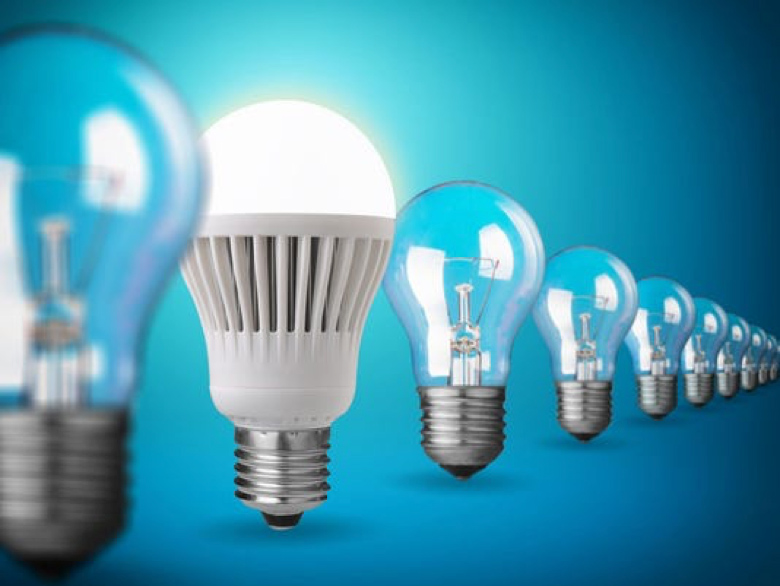The advantages of LED lighting are energy and light efficiency and the ability to light at full intensity immediately after switching on.
The LED lighting is the kind of lamp that has a LED bulb. Such a bulb does not have a filament like a conventional bulb, but it uses LED technology. Despite this difference LED lighting has the same usage and function as the lighting with classical filament bulbs.
Developed for the first time in 1962, the commercial LED lighting has been around since 1980 when it started to be produced, however only infrared electroluminescent diodes were available at that time. Other colors came some in the 1990s when blue saltpeter was developed in Japan. The boom of white bulbs, which are the most used and sought-for ones, came when the blue saltpeter was combined with yellow luminophore to produce long wavelengths. The result of this combination is the light that the human eye perceives as white.
Structurally, Light-Emitting Diode (LED) represents a component in which the contacted chip (or combination of chips) is sprayed with a material with the desired optical properties (LEDs are produced in point or diffuse design, with different beam angles). The contacts can be surface mounted (SMD) or flexible or flexible.
Multiple LED chip assemblies in a single housing can have separate contacts for each chip, common anode or cathode, or antiparallel, or they can have control electronics on the chip (for example, color-changing or flashing LEDs).
The basic single-crystal diodes are usually covered with spherical caps made of epoxy resin or acrylic polyester. Indeed, the materials from which LEDs are made have a relatively high refractive index and a large part of the light emitted would be reflected by total reflection back at the planar interface with the air.
Compared to other electrical light sources (bulb, discharge lamp, glow lamp), LEDs have the advantage of working with relatively low current and voltage values. This implies their use in displays (in the form of digits and letters). By combining the base colors (red, green, blue) it is also possible to obtain color screens. More on the development of colors in LED bulbs: https://en.wikipedia.org/wiki/Light-emitting_diode#History

Four main advantages of this lighting have to be mention here: it is the energy efficiency, the light efficiency, its ability to light at full intensity immediately after switching on and its lifetime.
The greatest advantage of LED lamps over the incandescent ones is noticeably lower power consumption. A suitable measure for energy efficiency is the luminous efficiency, which means how great a luminous flux is emitted by a light source at 1 Watt. For example, a standard 60-Watt bulb has an efficiency of about 12 lm / Watt; the LED bulb, which is an alternative to this 60-Watt bulb, emits about 100-130 lm / Watt. Thus, the LED bulb is about ten times as efficient as the standard incandescent one.
In terms of light efficiency, it should be noted that the energy efficiency and hence the possible overall economy may be relative. When comparing the efficiency of different life sources, these ones are roughly the same: Fluorescent lamp T5HE (Ø16mm) 114 lm / Watt, Sodium lamp 104 lm / Watt and Metal halide lamp 115 lm / Watt.
When determining the lifetime of an LED bulb, it is good to know what the value the lifetime is related to. It is very common that the low-end products importers give a service life of around 50,000 hours. This refers to the life of the chip, not to the life of the electronics or other components of the LED bulb, so this lifetime is only hypothetical. Click here to read about the longevity of these bulbs.
In the premium market segment, it has been established that LED bulbs for home use are produced with a lifetime of 15,000 hours. The lifetime is determined by the moment when 50% of LED bulbs shine at least 70% of the power. The length of 15,000 hours is the same as for commercially available energy-saving lamps (compact fluorescent lamps). For the professional segment, the service life has stabilized from 35,000 hours to 50,000 hours.
The last great advantage of these bulbs is the fact that they start to light immediately at full intensity, they do not mind frequent switching on and off, or lower temperatures (the usual operating temperature range is -35 ° C to +45 ° C). While the frequent switching might have some influence on the bulb depending on its design, it has no effect on its lifetime.
Scott Ellyson, CEO of East West Manufacturing, brings decades of global manufacturing and supply chain leadership to the conversation. In this episode, he shares practical insights on scaling operations, navigating complexity, and building resilient manufacturing networks in an increasingly connected world.